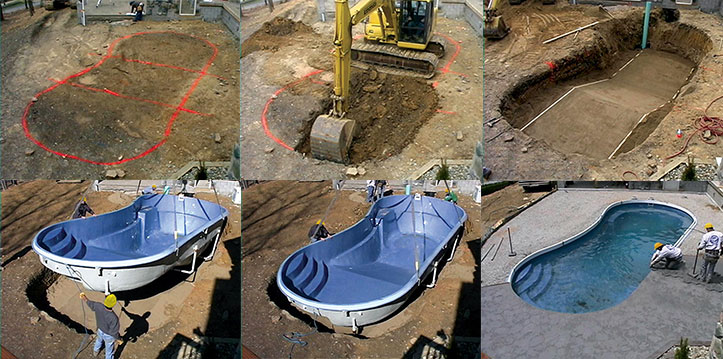Editor’s note: Many thanks to Dave Petito of Pool World in Red Bank, NJ, for contributing to this post. Pool World closes approximately 1,000 pools every fall, so they have tremendous experience and expertise in this area.
In order to protect a swimming pool, it is critical that the proper winterization methods are performed every autumn. Not only does it make opening your pool easier in the spring but it also ensures that one of your largest backyard investments is secured properly for the winter months.
Winterizing a pool can certainly be performed by a homeowner provided they are trained and follow the recommended process provided by their local Pool Dealer. However, in most markets, a professional pool closing service is a relatively inexpensive maintenance process compared to the cost of major repairs that may need to be done if the winterization is done incorrectly.
Winterizing the Pool
It’s important to note that there are many ways to approach pool winterization. What’s provided here is the process that Pool World has used with great success over the years with its many happy customers.
Pool World has a two-person crew perform the process, which takes place as follows:
- Before the team arrives, the homeowner ensures that the pool is clean and the water chemistry is balanced.
- Winterizing chemicals are added to the pool. This will include a shock treatment and a winterizing algaecide.
- While the chemicals circulate, the team removes any ladders, handrails, or fittings in the pool.
- Water lines and pool equipment are blown out. Pool World uses a special commercial pool air blower (which sends a high volume of air through the lines at lower pressure) rather than an air compressor (which produces lower volume at higher pressure) to ensure all water is removed. Water left in lines or equipment can freeze and expand during the winter, causing damage if this step is performed incorrectly.
- Lines into the pool are plugged properly to ensure no water can enter back into the line.
- Skimmers are plugged with a specific plug called a Gizmo (8-10″ tall plug). This protects the skimmer from cracking.
- Next the crew double-checks that no water remains in the lines feeding additional water features like jets, waterfalls, slides, etc.
- After all lines are closed, the crew tends to the main drain. It cannot be plugged, so they do what’s called “air-locking,” which means they turn a valve at the filter to shut that line off.
Covering the Pool
After all the winterization steps are complete, the Pool World crew installs the cover. We almost always recommend a winter mesh or solid safety cover. Winter mesh or solid safety covers are mounted to the pool deck using tension springs. Not all winter covers are safety covers. In order to call it a safety cover, the cover must meet specific requirements based on ATSM (American Society for Testing Materials) testing standards.
Latham Pool Products is one of the leading manufacturers of Winter Safety Covers and ensures their covers are designed correctly using the ATSM standards. Winter safety covers ensure the pool is safe to be around in the off-season. It is especially important to consider if there are small children or animals nearby. When putting a safety cover in place, the crew checks the anchor sites and repairs them if needed.
While a cover and proper winterization can protect your pool in the winter months virtually worry free; if there are extreme snowfalls, it is important to remove some or all of the accumulations from the cover. This will ensure there’s not unnecessary weight on the cover all winter. Constant weight could over torque the springs, thus prematurely shortening the life of the cover. On average, a properly maintained winter safety cover should last at least 10 years.
Other Tasks
A few wrap-up tasks and the job is complete:
- If the homeowner has a spa and wants to close it down for the winter, the same procedure is followed to drain the lines and cover it.
- In the filtration system, drain plugs are removed from the pump, filter, heater, and secondary pumps for water features or pressure-based cleaners. Multi-port valves are set to the winterizing position. And, any plugs or other items removed in this process are placed in the skimmer basket so they’re easy to find in the spring when you are opening your pool.
- If a heater is present, the gas line valve is shut.
Showing You The Ropes
When winterizing your pool, the Pool World crew is always happy to explain the steps they are taking and why they are taking them. If you have questions about winterizing your pool or about installing a new pool, please contact the local independent Latham Independent Builder near you.







Hello I have your mesh cover and I’m closing my pool for the winter. What is the recommended water level under the mesh safety cover? Should the water be lowered below the skimmer or even lower below my jets?
Hi Paul – The recommended water level is 1″ below the skimmer. Learn more about winterization in this article and video here: https://www.lathampool.com/blog/maintain/what-to-expect-the-difference-between-closing-a-pool-and-winterizing/